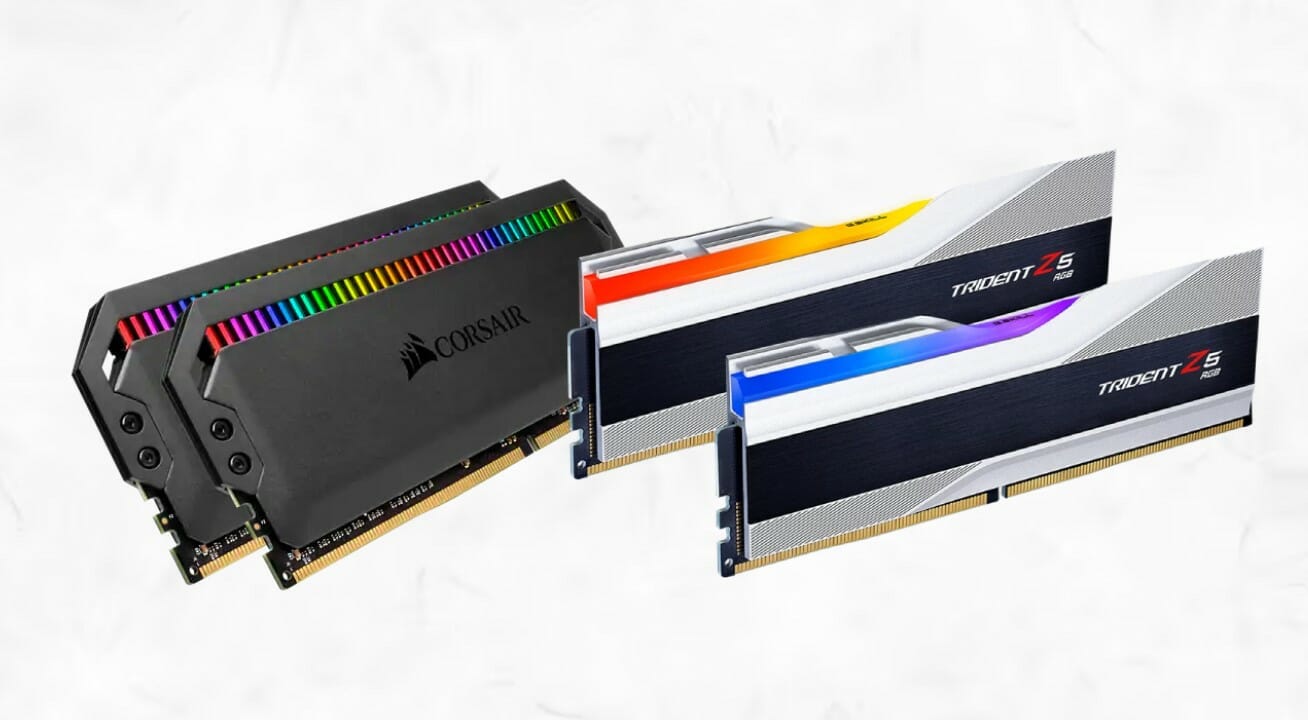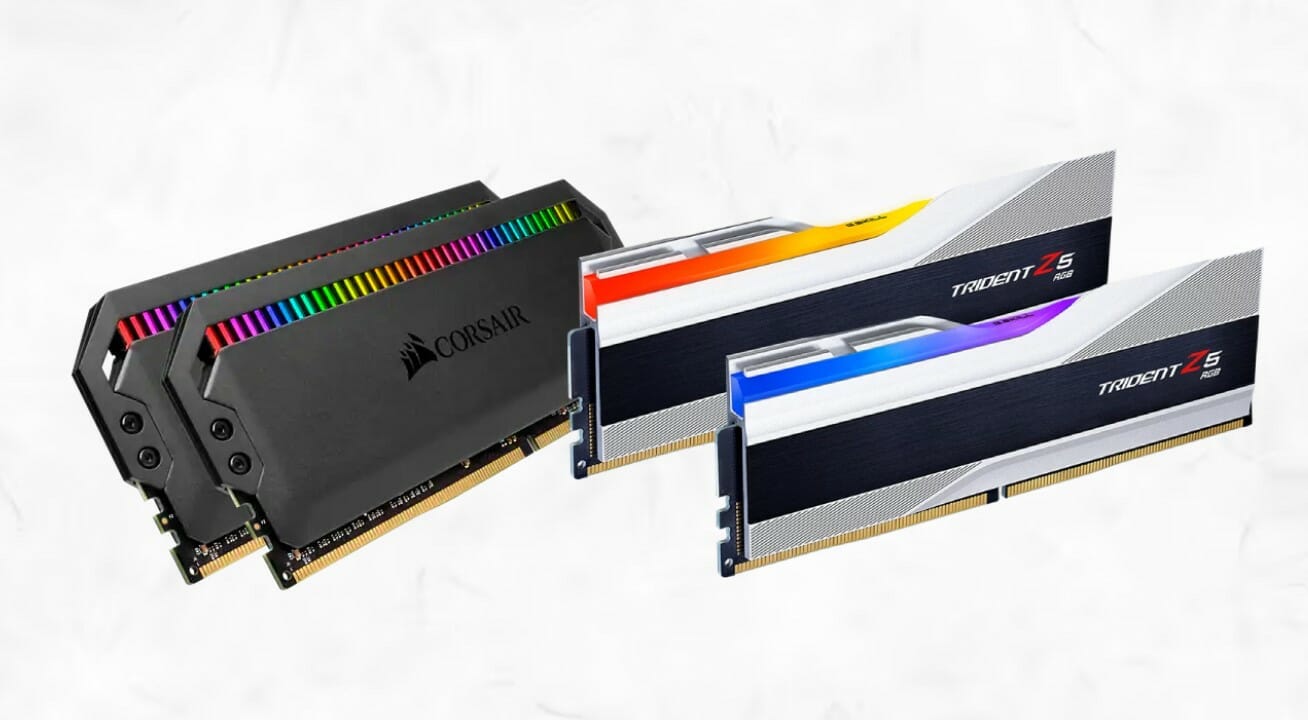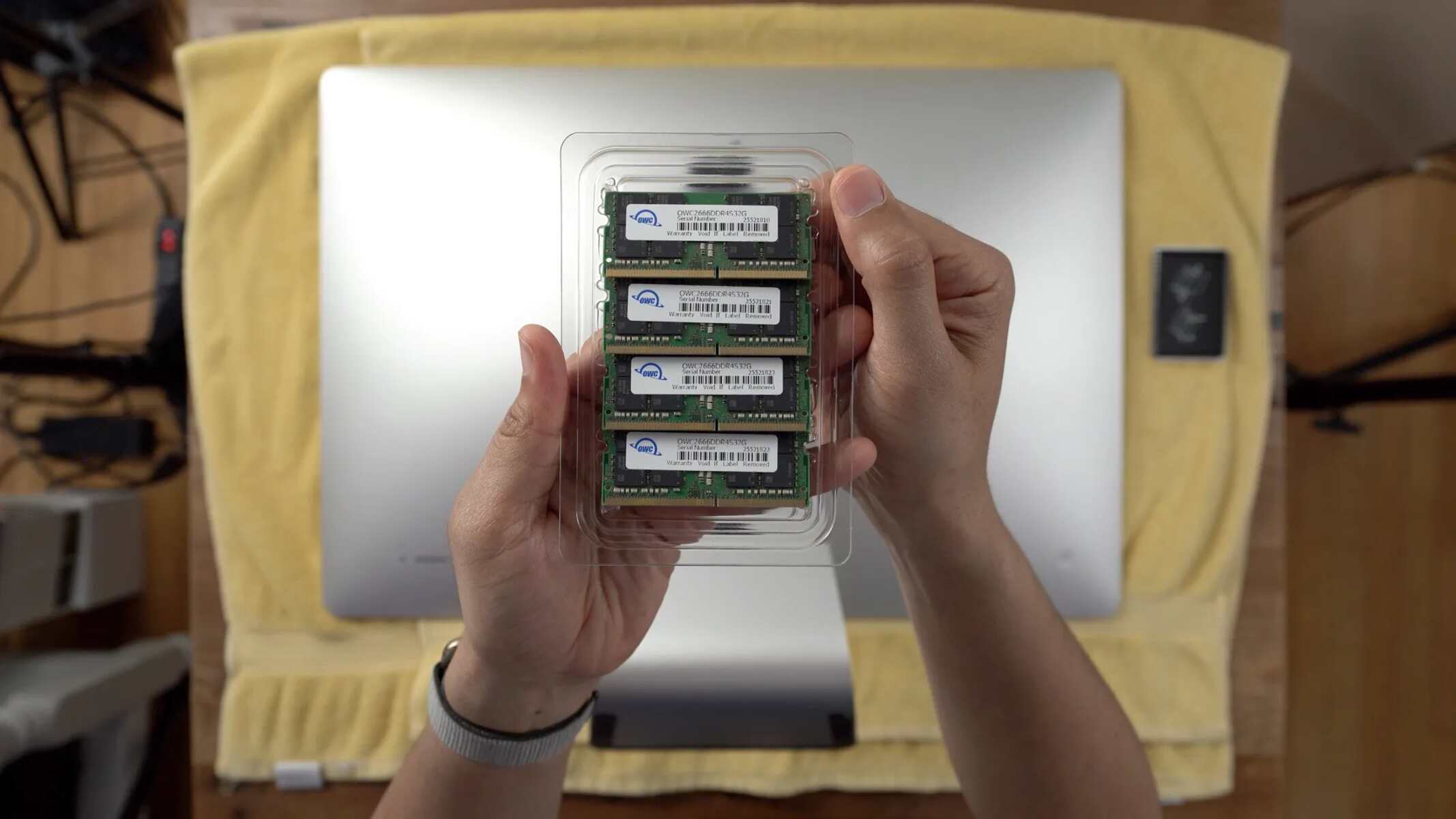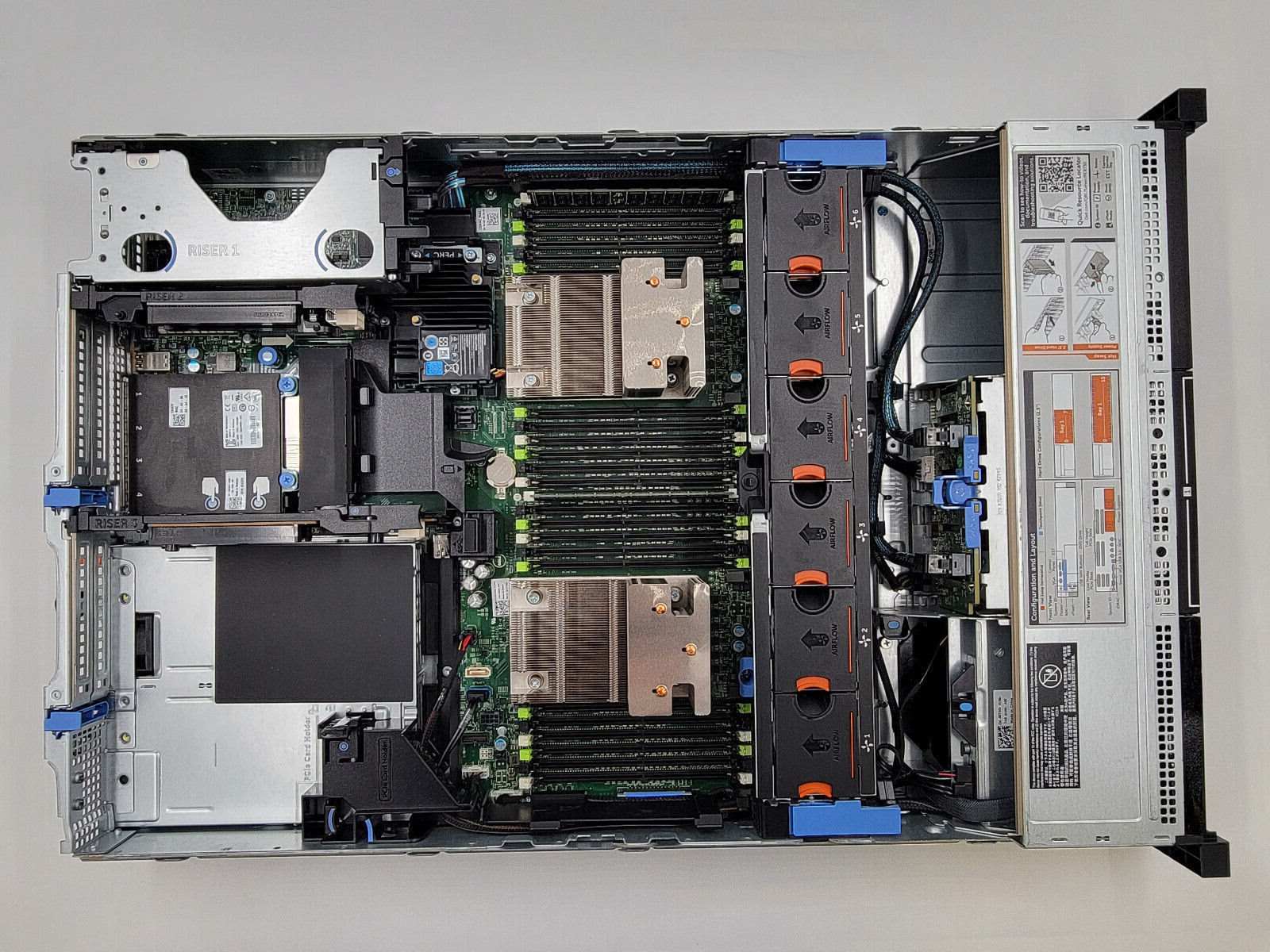Introduction
Welcome to the world of computer memory, where the amount of RAM you have can significantly impact the performance of your system. RAM, or Random Access Memory, plays a crucial role in multitasking, running applications, and overall system speed.
RAM is a volatile, temporary form of storage that holds the data and instructions that your computer’s processor needs to access quickly. The more RAM your computer has, the more data it can store for quick access, resulting in faster application loading times, smoother multitasking, and better overall performance.
But why would you need a whopping 128GB of RAM? Isn’t that overkill for the average user? While it’s true that most people won’t need that much memory, there are specific scenarios where having a large amount of RAM can make a significant difference.
In this article, we’ll explore the various reasons why someone might need 128GB of RAM in their system. From memory-intensive applications and virtual machines to gaming and professional workstations, we’ll dive into the specific use cases that can benefit from a high RAM capacity.
But before we delve into the details, let’s first establish a basic understanding of RAM and how it contributes to system performance. By grasping the fundamental concepts, you’ll be better equipped to understand the relevance of a large RAM capacity in specific scenarios.
The Basics of RAM
Before we dive into the reasons for needing 128GB of RAM, let’s talk about the basics of RAM and its role in your computer system. RAM, also known as Random Access Memory, is a crucial component that enables your computer to perform tasks efficiently.
RAM serves as a temporary storage unit for your computer, allowing it to quickly access and store data that is actively being used. When you open a program or run an application, the necessary data is loaded into RAM to ensure that the processor can access it rapidly. The more RAM you have, the more data your computer can store for quick access.
One important factor to note about RAM is its volatility. Unlike permanent storage devices like hard drives or solid-state drives, RAM does not retain data when the computer is turned off. This is why it’s called volatile memory. Once you power off your computer, anything stored in RAM is lost.
The speed of RAM is another crucial aspect to consider. RAM is categorized by its frequency, typically measured in megahertz (MHz) or gigahertz (GHz). The higher the frequency of your RAM, the faster it can transfer data to and from the processor, resulting in improved overall performance.
It’s worth noting that RAM is different from storage devices like hard drives or SSDs. While storage devices provide long-term storage space for your files and programs, RAM is primarily focused on providing quick access to data that is currently in use. It acts as a temporary workspace for your computer to perform its tasks efficiently.
Having a sufficient amount of RAM is crucial for ensuring smooth multitasking and efficient workflow. When your computer runs out of available RAM, it starts using disk space as virtual memory, resulting in a slowdown in performance. That’s why it’s important to have enough RAM to handle the simultaneous tasks and applications you use on a regular basis.
Now that we have a basic understanding of what RAM is and how it functions, let’s explore some specific scenarios where having 128GB of RAM can prove to be beneficial.
RAM and System Performance
When it comes to system performance, RAM plays a crucial role in determining how efficiently your computer operates. The amount of RAM you have directly affects the speed and responsiveness of your system.
Having a sufficient amount of RAM allows your computer to store and access data quickly, which reduces the need for accessing information from slower storage devices like hard drives. This results in faster application loading times, smoother multitasking, and overall snappier performance.
Running resource-intensive applications such as video editing software, 3D rendering programs, or virtual machines require a significant amount of RAM. These applications often deal with large data sets, complex calculations, and graphics rendering, which can put a strain on your system’s resources. By having 128GB of RAM, you provide ample space for these applications to work smoothly, without any noticeable lag or performance bottlenecks.
In addition to handling resource-intensive tasks, a large amount of RAM also enables your computer to cache data efficiently. Caching is the process of storing frequently accessed data in RAM to facilitate quicker access in the future. By having more RAM, your computer can cache a larger portion of frequently used data, resulting in faster load times for applications and files.
Moreover, if you frequently work with virtual machines, having 128GB of RAM can significantly enhance your experience. Virtual machines allow you to run multiple operating systems simultaneously on a single physical machine. Each virtual machine requires dedicated system resources, including RAM. By allocating a substantial amount of RAM to each virtual machine, you can ensure smooth operation and prevent any memory-related performance issues.
Another advantage of having ample RAM is evident when using RAM disk applications. RAM disks are virtual drives created using a portion of your computer’s RAM. These drives offer incredibly fast access speeds as data is read and written directly to RAM. With 128GB of RAM, you can allocate a significant portion of it to create sizable RAM disks, which can be beneficial for tasks that require ultra-fast data transfer, such as video editing or database management.
All in all, having 128GB of RAM directly impacts system performance by providing ample space for resource-intensive tasks, efficient data caching, running virtual machines smoothly, and utilizing RAM disks for high-speed data transfer.
Memory Intensive Applications
Memory-intensive applications have become increasingly prevalent in various fields, including scientific research, data analysis, graphic design, and video editing. These applications often deal with large datasets, complex calculations, and high-resolution graphics, requiring a significant amount of RAM to operate effectively.
Having 128GB of RAM can greatly benefit these memory-intensive applications. It allows for the smooth loading and processing of large files, resulting in improved efficiency and reduced wait times. For instance, when working with massive datasets in scientific research or data analysis, having ample RAM ensures that the data is readily available for analysis, without experiencing slowdowns or bottlenecks.
Graphic design and video editing software, such as Adobe Photoshop or Premiere Pro, heavily rely on RAM to store and manipulate high-resolution images and videos. With 128GB of RAM, these applications can easily handle numerous layers, effects, and filters, providing a seamless editing experience.
Additionally, virtual reality (VR) and augmented reality (AR) applications require a substantial amount of RAM to render and display immersive environments in real-time. By having 128GB of RAM, you can ensure a smooth and immersive experience when using VR or AR applications, without any performance issues or lag.
Another example where ample RAM is beneficial is in computer-aided design (CAD) software. CAD applications, such as AutoCAD or SolidWorks, require significant memory resources to handle complex 3D models and perform intricate calculations. With 128GB of RAM, these applications can operate smoothly, allowing engineers and designers to work efficiently without any slowdowns or lag.
In summary, memory-intensive applications in various fields can greatly benefit from 128GB of RAM. Whether it’s handling large datasets, processing high-resolution graphics, or rendering immersive environments, having ample RAM ensures smooth operation, improved efficiency, and reduced wait times.
Virtual Machines and RAM Usage
Virtualization has revolutionized the way we utilize computing resources, allowing multiple operating systems to run concurrently on a single physical machine. Virtual machines (VMs) have become indispensable in various scenarios, including software development, server consolidation, and testing environments.
Running virtual machines can be resource-intensive, especially in terms of RAM usage. Each virtual machine requires its own dedicated system resources, including CPU, storage, and, most importantly, RAM. The amount of RAM allocated to each virtual machine directly impacts its performance and ability to run smoothly.
With 128GB of RAM, you have ample resources to allocate significant amounts of memory to each virtual machine. This ensures that each VM has sufficient space to operate without experiencing any performance degradation or memory-related bottlenecks. For example, if you’re running multiple virtual machines for software testing purposes, having 128GB of RAM allows you to allocate enough memory to each VM, providing a stable and efficient testing environment.
Developers often use virtual machines for development and testing purposes, as it provides a controlled and isolated environment. With 128GB of RAM, developers can allocate enough memory to each VM to ensure smooth code compilation, efficient testing, and cross-platform compatibility checks.
In addition, virtual machines used for server consolidation can benefit from 128GB of RAM. Server consolidation involves running multiple virtual servers on a single physical machine to reduce hardware costs and improve overall resource utilization. In this scenario, having sufficient RAM ensures that each virtual server can handle its allocated workload, without any impact on performance or responsiveness.
Another aspect to consider is the scalability of virtualized environments. As your business grows and the demand for virtual machines increases, having 128GB of RAM provides scalability and flexibility. You can easily allocate more memory to additional virtual machines as needed, without worrying about running out of memory resources.
Overall, virtual machines heavily rely on RAM resources, and having 128GB of RAM enables efficient and smooth operation of multiple virtual machines simultaneously. Whether it’s for development and testing purposes or server consolidation, ample RAM ensures that each virtual machine can perform optimally, leading to increased productivity and reduced downtime.
RAM Disk Applications
RAM disks are virtual drives created using a portion of your computer’s RAM. Unlike traditional storage devices such as hard drives or solid-state drives, RAM disks offer incredibly fast read and write speeds. This makes them ideal for applications that require ultra-fast data access and transfer rates.
With 128GB of RAM, you can allocate a significant portion of it to create sizable RAM disks. This can have several benefits in various scenarios, such as video editing, database management, and gaming.
In video editing, where large media files are frequently accessed for editing and rendering, utilizing a RAM disk can greatly speed up the process. By loading your video files onto a RAM disk, you can vastly improve read and write performance, resulting in faster access to your footage and smoother editing workflows. The increased speed of a RAM disk can make a noticeable difference, especially when working with high-definition or 4K videos.
Database management systems can also benefit from RAM disk applications. Databases typically handle a high volume of read and write operations, and the speed of data access can significantly affect overall performance. By using a RAM disk to store frequently accessed database files, you can achieve faster data retrieval, improving the responsiveness of your database application.
Furthermore, gaming enthusiasts can leverage RAM disks to enhance their gaming experience. By loading game files onto a RAM disk, game load times can be significantly reduced, resulting in quicker access to game levels and environments. This can provide a competitive edge in multiplayer games and improve overall gameplay experience by reducing or eliminating in-game loading screens.
Additionally, other resource-demanding applications, such as software development environments or 3D modeling software, can benefit from using RAM disks. Storing frequently accessed project files or frequently used assets on a RAM disk can lead to more efficient compilation and rendering processes, saving valuable time for developers and designers.
It’s important to note that the data stored in a RAM disk is volatile, as it resides in RAM, meaning it will be lost when the computer is shut down or restarted. Therefore, RAM disks are best suited for temporary storage or applications that don’t rely on long-term data retention.
All in all, the utilization of RAM disk applications can significantly boost performance in various scenarios, improving read and write speeds for video editing, database management, gaming, and resource-intensive applications. With 128GB of RAM, you have the capacity to allocate a substantial portion of it to create sizable RAM disks and maximize the benefits of this ultra-fast storage solution.
Gaming and RAM Requirements
Gaming has become increasingly demanding in terms of hardware requirements, with modern titles pushing the limits of graphics, AI, and overall performance. One crucial component that can greatly impact gaming performance is the amount of RAM in your system.
While the minimum RAM requirements for most games are typically in the range of 8GB to 16GB, having 128GB of RAM provides a unique advantage for avid gamers. With this much RAM, you can ensure that your gaming experience is smooth, without any performance bottlenecks or lag.
One of the key benefits of having 128GB of RAM for gaming is the ability to run multiple applications simultaneously without affecting gaming performance. While gaming, you may want to have additional programs running in the background, such as streaming software, voice chat applications, or even video editing software for content creation. With ample RAM, your system can easily handle these multitasking scenarios, allowing you to play games and stream or perform other tasks simultaneously without any noticeable impact on performance.
In addition, some games, especially those featuring vast open-world environments, high-resolution textures, and complex AI systems, can benefit from having more RAM. A larger RAM capacity allows the game to load assets and data quicker, resulting in reduced loading times, smoother gameplay, and improved overall performance.
Modding is another aspect of gaming that can benefit from 128GB of RAM. Many popular games support mods that enhance gameplay or introduce new content. Modded games often require more resources due to the additional assets and scripting involved. With a substantial amount of RAM, you can ensure a seamless modding experience, without encountering performance issues or limitations.
Future-proofing is also a consideration when it comes to gaming and RAM requirements. As game developers continue to push the boundaries of technology, it’s expected that games will increasingly demand more system resources. Investing in 128GB of RAM ensures that your system is ready for future game releases and can handle the resource requirements of upcoming titles without the need for immediate upgrades.
It’s important to note that having 128GB of RAM alone will not guarantee optimal gaming performance. Other hardware components, such as the graphics card, CPU, and storage, also play crucial roles. However, having ample RAM allows your system to efficiently handle memory-intensive games and multitasking scenarios without any performance limitations.
In summary, while most games have minimum RAM requirements, having 128GB of RAM provides significant advantages for gaming. It enables smooth multitasking, reduces loading times, improves overall performance, supports modding, and future-proofs your system for upcoming game releases. With this high RAM capacity, you’ll be well equipped to fully immerse yourself in the gaming experience without any compromises.
Professional Workstations and RAM Needs
Professional workstations are designed to handle demanding tasks in fields such as graphic design, architecture, engineering, animation, and scientific research. These industries often require powerful hardware to handle complex calculations, rendering, and data processing. RAM plays a crucial role in workstation performance, and having 128GB of RAM can greatly benefit professionals in these fields.
In graphic design and digital content creation, software such as Adobe Creative Cloud’s suite, including Photoshop and Illustrator, demand substantial memory resources. Working with intricate designs, high-resolution images, and complex layer compositions can quickly consume available RAM. With 128GB of RAM, professionals can smoothly work on complex projects, reducing lag and ensuring efficient workflow.
Architects and engineers using computer-aided design (CAD) software require significant memory resources to handle and manipulate large 3D models. Having ample RAM allows for smooth rendering, faster calculations, and seamless navigation through complex designs. With 128GB of RAM, professionals can work on elaborate architectural projects or intricate engineering designs without encountering performance bottlenecks.
Animation studios also benefit from high RAM capacities, especially when working on complex 3D animations or simulations. Applications like Autodesk Maya or Cinema 4D require substantial memory resources to handle the immense amount of data generated during the animation process. Having 128GB of RAM ensures that professionals can work efficiently without experiencing slowdowns, enabling smooth playback, quicker rendering, and seamless interaction with the animation software.
Scientific researchers and data scientists deal with massive datasets that require processing and analysis. Tools like MATLAB, R, or Python data libraries such as NumPy and Pandas can benefit from a large RAM capacity. Researchers can load and manipulate large datasets entirely in memory, reducing the need for disk caching and improving data processing speed. With 128GB of RAM, professionals can perform complex statistical analyses, machine learning algorithms, and simulations more efficiently.
Furthermore, virtualization and server consolidation are common practices in professional workstations, allowing professionals to run multiple operating systems or virtual servers simultaneously. Each virtual machine requires its own resources, including RAM. With 128GB of RAM, professionals can allocate sufficient memory to each virtual machine, ensuring smooth performance and efficient resource utilization.
In summary, professional workstations in fields like graphic design, architecture, engineering, animation, and scientific research greatly benefit from having 128GB of RAM. It enables smooth operation of memory-intensive applications, smooth rendering and calculations, seamless animation playback, efficient data analysis, and support for virtualization. Professionals can work confidently on complex projects without experiencing performance limitations or slowdowns.
Future-Proofing Your System
Technology is constantly advancing, and as it does, software and applications become more demanding in terms of system resources. Future-proofing your system, including having ample RAM, ensures that your computer can handle the evolving needs of technology and software requirements.
Having 128GB of RAM provides a significant advantage in terms of future-proofing your system. As applications continue to evolve and require more memory resources, having a high RAM capacity ensures that you are prepared for future software releases. This means you won’t have to worry about upgrading your system’s RAM anytime soon and can focus on other aspects of your computer’s performance.
Future-proofing your system with 128GB of RAM also allows for efficient multitasking and utilization of resource-intensive applications. As new software and technologies emerge, the demand for processing power and memory increases. With ample RAM, you can comfortably run multiple applications simultaneously, whether it’s video editing software, virtual machines, or memory-intensive games, without experiencing performance bottlenecks.
Furthermore, future developments in virtual reality (VR) and augmented reality (AR) are likely to require greater system resources. These immersive technologies create more realistic and detailed virtual environments, placing a heavier demand on your computer’s performance. With 128GB of RAM, you can be confident that your system can handle the resource requirements of future VR and AR applications, providing a seamless and immersive experience.
Another aspect to consider is the potential growth of your needs and workload. Over time, your requirements may change, whether it’s transitioning to more demanding software, increasing data processing volume, or taking on more complex projects. By having 128GB of RAM, you have room for growth and can adapt to these evolving needs without the immediate need for hardware upgrades.
Moreover, future iterations of operating systems may require more RAM to function optimally. It’s not uncommon for new operating systems to demand increased hardware resources to provide enhanced features and capabilities. By investing in 128GB of RAM, you ensure that your system can accommodate future operating system updates without compromising performance or having to limit your usage of new features.
In essence, future-proofing your system with 128GB of RAM ensures that you are equipped to handle the ever-increasing demands of software, applications, and emerging technologies. It allows for efficient multitasking, adaptability to changing workload requirements, and seamless usage of future software releases. By having ample RAM, you provide yourself with a system that can keep up with technological advancements and deliver optimal performance for years to come.
Conclusion
In conclusion, the need for 128GB of RAM may not be essential for the average user, but in certain scenarios, it can provide significant benefits. Whether you’re running memory-intensive applications, managing virtual machines, utilizing RAM disk applications, gaming, or working with professional workstations, having ample RAM ensures smooth performance, efficient multitasking, and future-proofing your system.
For memory-intensive applications like video editing, graphic design, or scientific research, 128GB of RAM allows for smooth loading and manipulation of large files, reducing bottlenecks and improving workflow efficiency. In virtualization and server consolidation, having sufficient RAM ensures stable virtual machine performance without compromising resource availability.
RAM disk applications, used in video editing, database management, or gaming, benefit greatly from the ultra-fast read and write speeds of RAM. With 128GB of RAM, you can allocate a significant portion to create sizable RAM disks, significantly boosting data access and transfer rates.
Gaming enthusiasts can benefit from 128GB of RAM, allowing for multitasking while playing games, reducing loading times, and providing future-proofing as games continue to demand more resources. Professional workstations in fields like graphic design, architecture, engineering, animation, and scientific research can utilize the high RAM capacity to handle complex calculations, rendering, and data processing.
Lastly, future-proofing your system is essential in the rapidly evolving world of technology. By investing in 128GB of RAM, you ensure that your system can handle the demands of future software releases, emerging technologies, and growing workload requirements. The ability to efficiently multitask, adapt to changing needs, and easily handle resource-intensive tasks sets you up for a seamless and productive computing experience.
Ultimately, the decision to invest in 128GB of RAM depends on your specific needs and usage scenarios. While it may be excessive for some users, those who engage in memory-intensive tasks, require efficient virtualization, or seek maximum performance and future-proofing will find immense value in having ample RAM. Assess your requirements, weigh the benefits, and make an informed decision to optimize your computing experience.

























